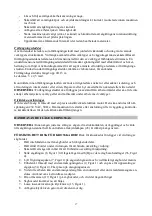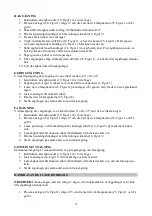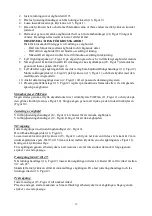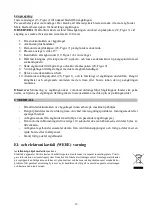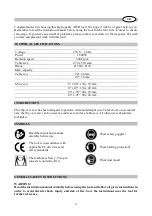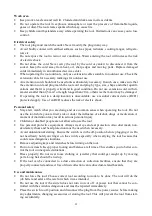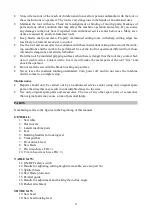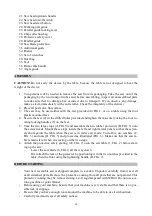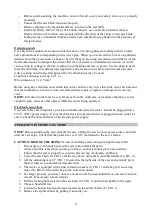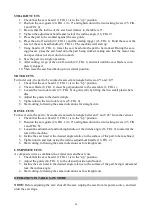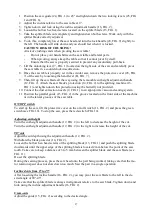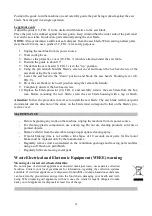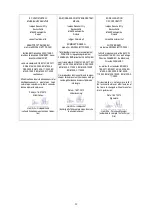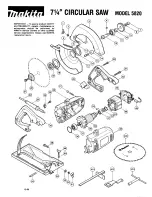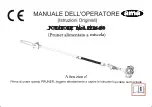
26
STRAIGHT CUTS
1.
Check that the saw head (19, FIG. 1) is in the “up” position.
2.
Position the saw guide (24, FIG. 1) to 0° and tighten down the two locking levers (25, FIG.
1 and FIG. 8).
3.
Be sure that the incline of the saw head relative to the table is 0°.
4.
Tighten the adjustment handle and lock of the incline angle (16, FIG. 2).
5.
Press the part to be worked against the saw guide.
6.
Press the on/off switch (22, FIG. 1) and the startup trigger (23, FIG. 1). Hold the saw at the
level of the saw head handle (21, FIG. 1). The machine will start up.
7.
Using handle (21, FIG. 1), lower the saw head onto the part to be worked. During the saw-
ing process, press the saw head onto the part being worked, taking care that the motor rota-
tion speed does not slow down too much.
8.
Saw the part in a single operation.
9.
After cutting, let go of the on/off switch (22, FIG. 1) and wait until the saw blade is com-
pletely stopped.
10.
Then raise the saw head back up to its initial position.
MITER CUTS
For miter cuts, the part to be worked is sawed at an angle between -45° and +45°.
1.
Check that the saw head (19, FIG. 1) is in the “up” position.
2.
The saw blade (8, FIG. 1) must be perpendicular to the saw table (1, FIG. 1).
3.
Loosen the two lock levers (25, FIG. 8) of guide (24) by lifting the two small plastic han-
dles.
4.
Adjust the guide to the desired angle.
5.
Tighten down the two lock levers (25, FIG. 8).
6.
Start cutting, following the same indications for straight cuts.
BEVEL CUTS
For bevel cuts, the part to be worked is sawed at an angle between 0° and +45° from the vertical.
1.
Check that the saw head (19, FIG. 1) is in the “up” position.
2.
Position the saw guide (24, FIG. 1) to 0° and tighten down the two locking levers (25, FIG.
1 and FIG. 8).
3.
Loosen the adjustment and locking handles of the incline angle (16, FIG. 2) located at the
rear of the machine.
4.
Incline the saw head at the desired angle relative to the surface of the part to be machined.
5.
Tighten down and lock using the incline adjustment handle (16, FIG. 2).
6.
Start cutting, following the same indications as for straight cuts.
COMPOSITE CUTS
A composite cut is a combination of miter cuts and bevel cuts.
1.
Check that the saw head (19, FIG. 1) is in the “up” position.
2.
Adjust the guide (24, FIG. 1) to the desired position and lock it.
3.
Incline the saw head to the desired angle relative to the surface of the part being worked and
lock the incline angle.
4.
Start cutting, following the same indications as for straight cuts.
OPERATION IN TABLE SAW MODE
NOTE: Before adjusting the saw: shut off the saw, unplug the saw from its power source, and wait
until the saw stops.






